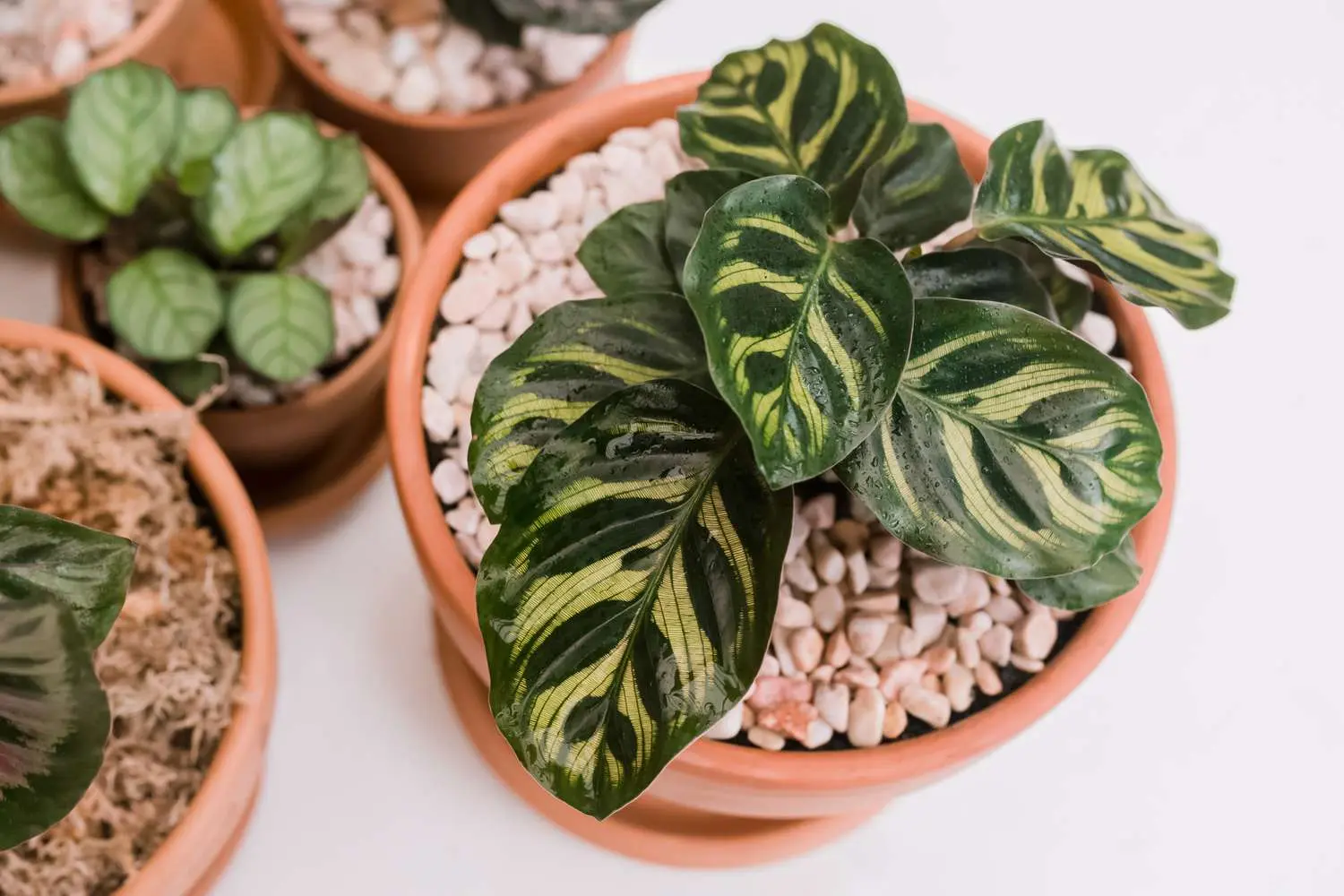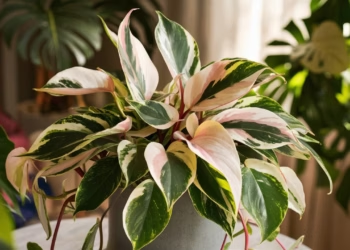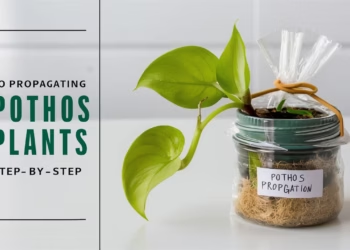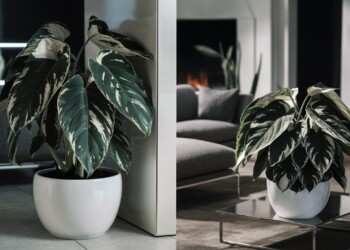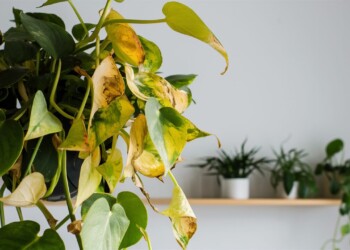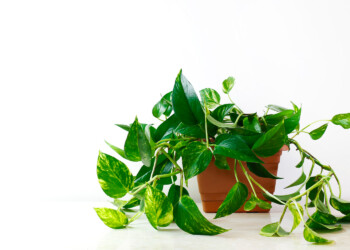Welcome, fellow plant enthusiasts, to the ultimate calathea plant care guide: How to grow calathea with confidence and finesse! Whether you’re a seasoned green thumb or a budding plant parent, delving into the world of calatheas promises an enchanting journey filled with lush foliage and captivating patterns.
In this comprehensive guide, we’ll embark on an adventure through the intricacies of calathea plant care, exploring everything from selecting the perfect variety to troubleshooting common issues. So, grab your watering can and let’s dive into the fascinating realm of calathea cultivation!
Table of Contents
Choosing the Right Calathea Variety
Ah, the first step on our journey: selecting the ideal calathea variety to grace your indoor oasis! With a plethora of options available, each boasting its unique charm, narrowing down your choices can feel like picking the perfect ice cream flavor-delightful yet challenging!
- Consider Your Space: Assess the lighting conditions and humidity levels in your home. Opt for low-light varieties like Calathea Orbifolia or Calathea Medallion if your space leans towards the shady side. For brighter areas, varieties such as Calathea Beauty Star thrive in moderate to bright indirect light.
- Embrace Diversity: Explore the diverse array of calathea varieties, each showcasing distinctive foliage patterns and colors. From the striking zebra-like stripes of Calathea Zebrina to the intricate markings of Calathea Roseopicta, let your personal preferences guide you towards the perfect pick!

Planting and Potting
With your chosen calathea variety in hand, it’s time to embark on the planting and potting journey-a crucial phase in ensuring your plant’s prosperity and growth!
Soil Selection: The Foundation of Success
Just like building a sturdy house requires a solid foundation, nurturing healthy calatheas begins with the right soil blend. Here’s what you need to know:
- Well-Draining Mix: Opt for a well-draining potting mix rich in organic matter, such as peat moss or coconut coir. This ensures proper aeration and prevents waterlogged roots-a nightmare for our beloved calatheas!
- Acidic Environment: Calatheas thrive in slightly acidic soil with a pH range of 6.0 to 6.5. Maintain optimal soil acidity by incorporating acidic amendments like pine bark or perlite into your potting mix.
Potting Techniques: Finding the Perfect Home
Once you’ve prepared your soil mix, it’s time to find the perfect potting vessel for your precious calathea. Follow these tips to create a cozy home for your green companion:
- Right Size Matters: Choose a pot with adequate drainage holes and sufficient room for your calathea’s root system to spread comfortably. A pot that’s too small can restrict growth, while an oversized container may lead to water stagnation.
- Mindful Repotting: If transplanting a mature calathea, handle its delicate roots with care to minimize stress. Gently loosen the root ball and place it in the new pot, ensuring the crown sits at the same level as before.
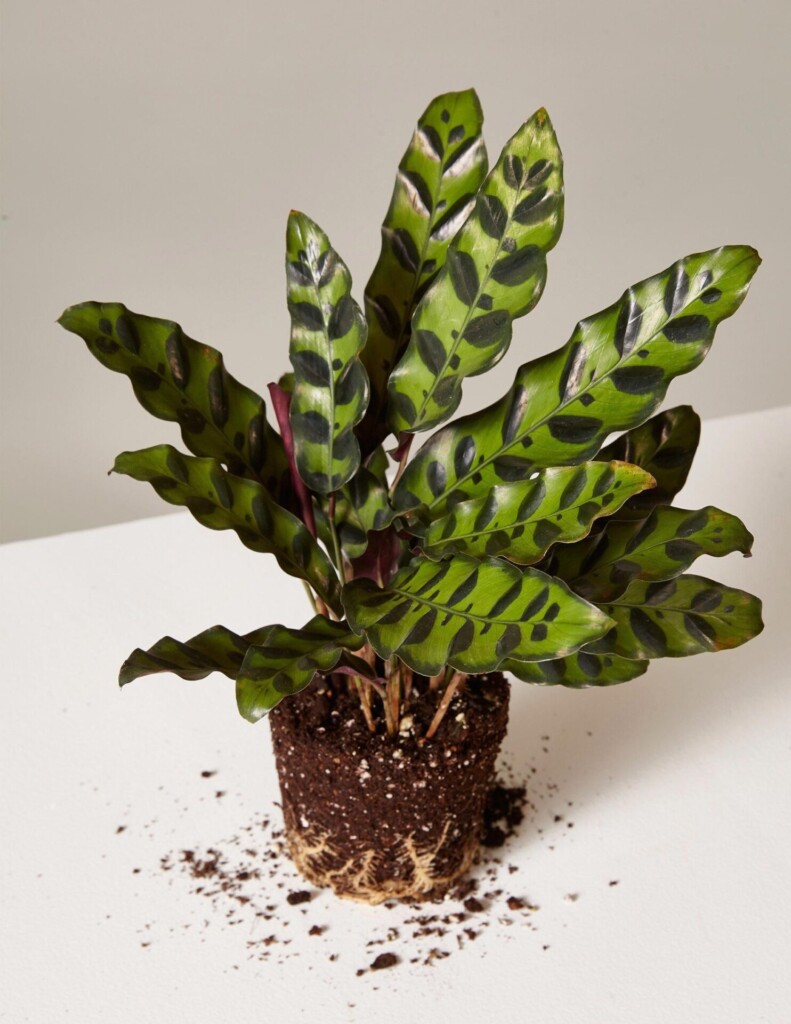
Watering Wisdom
Ah, watering-the cornerstone of plant care that often leaves even seasoned enthusiasts second-guessing their instincts! Mastering the art of watering is key to nurturing thriving calatheas.
Moisture Management: Striking the Perfect Balance
Maintaining optimal soil moisture is essential for calathea health and vitality. Strike the perfect balance between underwatering and overwatering with these expert tips:
- Frequent, Light Watering: Calatheas prefer consistently moist but not waterlogged soil. Water your plant when the top 25% of the soil is dry to the touch, allowing excess water to drain freely from the pot’s bottom. Aim for slightly damp soil, akin to a wrung-out sponge.
- Say No to Soggy Soil: Overwatering spells trouble for calatheas, leading to root rot and leaf yellowing. Monitor soil moisture levels closely and adjust your watering frequency accordingly, especially during winter when plants enter dormancy.
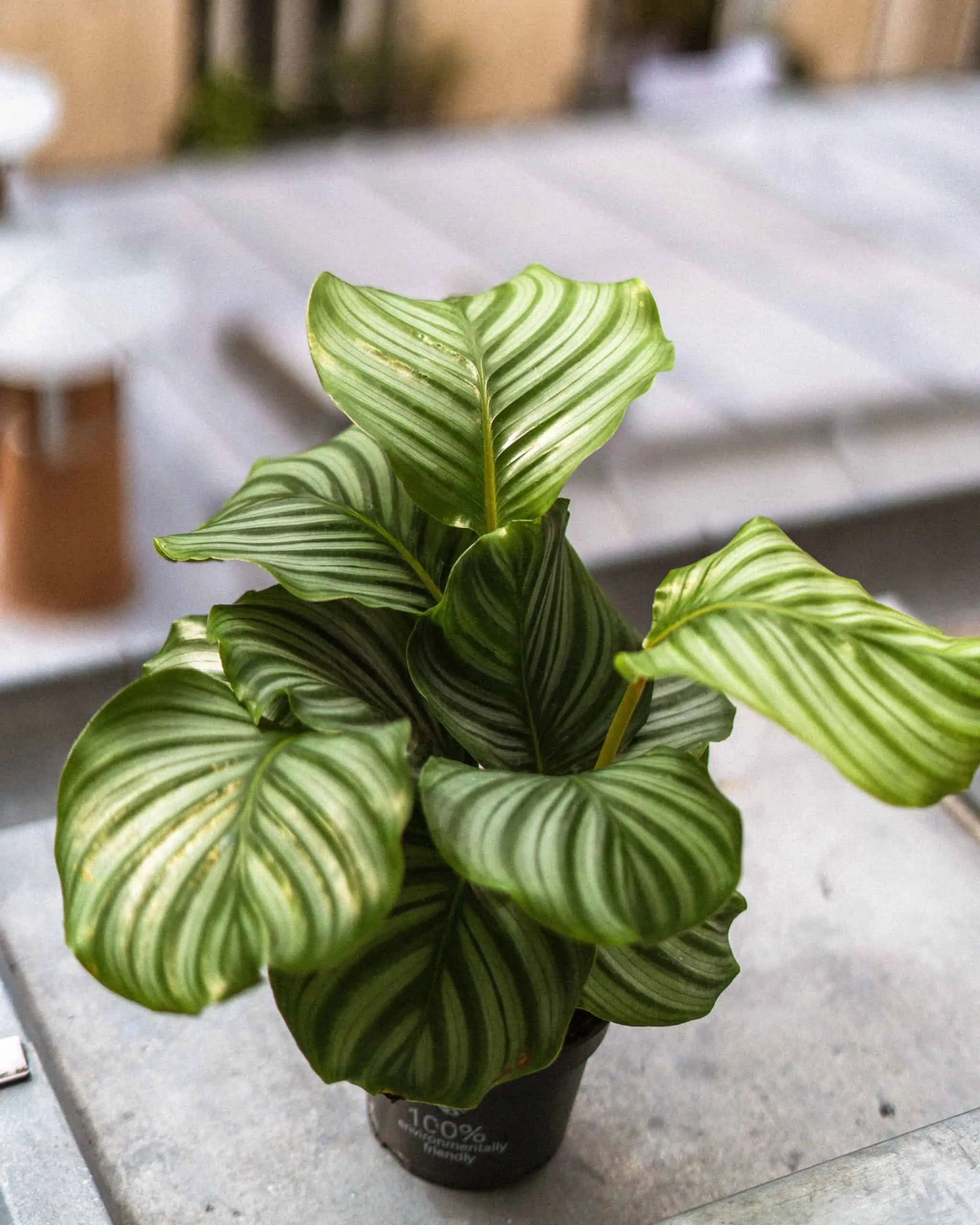
Light, Humidity, and Temperature Requirements
Calatheas are renowned for their love affair with humidity and dappled sunlight, replicating their native tropical habitat. Providing the right light and humidity conditions is paramount for ensuring their well-being.
Bright Indirect Light: Calatheas Light
Bask your calatheas in the gentle embrace of bright indirect light, mimicking the filtered sunlight found beneath forest canopies. Avoid direct sunlight, which can scorch delicate leaves, leading to unsightly burns.
- Ideal Placement: Position your calathea near east or north-facing windows where it receives gentle morning or filtered afternoon light. If natural light is limited, supplement with grow lights to meet your plant’s energy needs.
Temperature Considerations for Calathea Care
Maintaining appropriate temperature levels is crucial for the well-being of your Calathea. These plants prefer temperatures between 65-85°F (18-29°C). Avoid exposing them to temperatures below 55°F (13°C) or sudden temperature fluctuations, as they can cause stress to the plant. Protect your Calathea from cold drafts and direct heat sources during the winter months to prevent damage to the foliage.
Humidity Haven: Creating a Tropical Retreat
Transform your home into a tropical paradise by boosting humidity levels, much to your calathea’s delight! Here’s how to create a haven of moisture for your leafy companions:
- Group Therapy: Cluster calatheas together or place them near a humidifier to capitalize on collective moisture release. Alternatively, set pots atop a pebble-filled tray filled with water, replenishing as needed to maintain humidity levels.
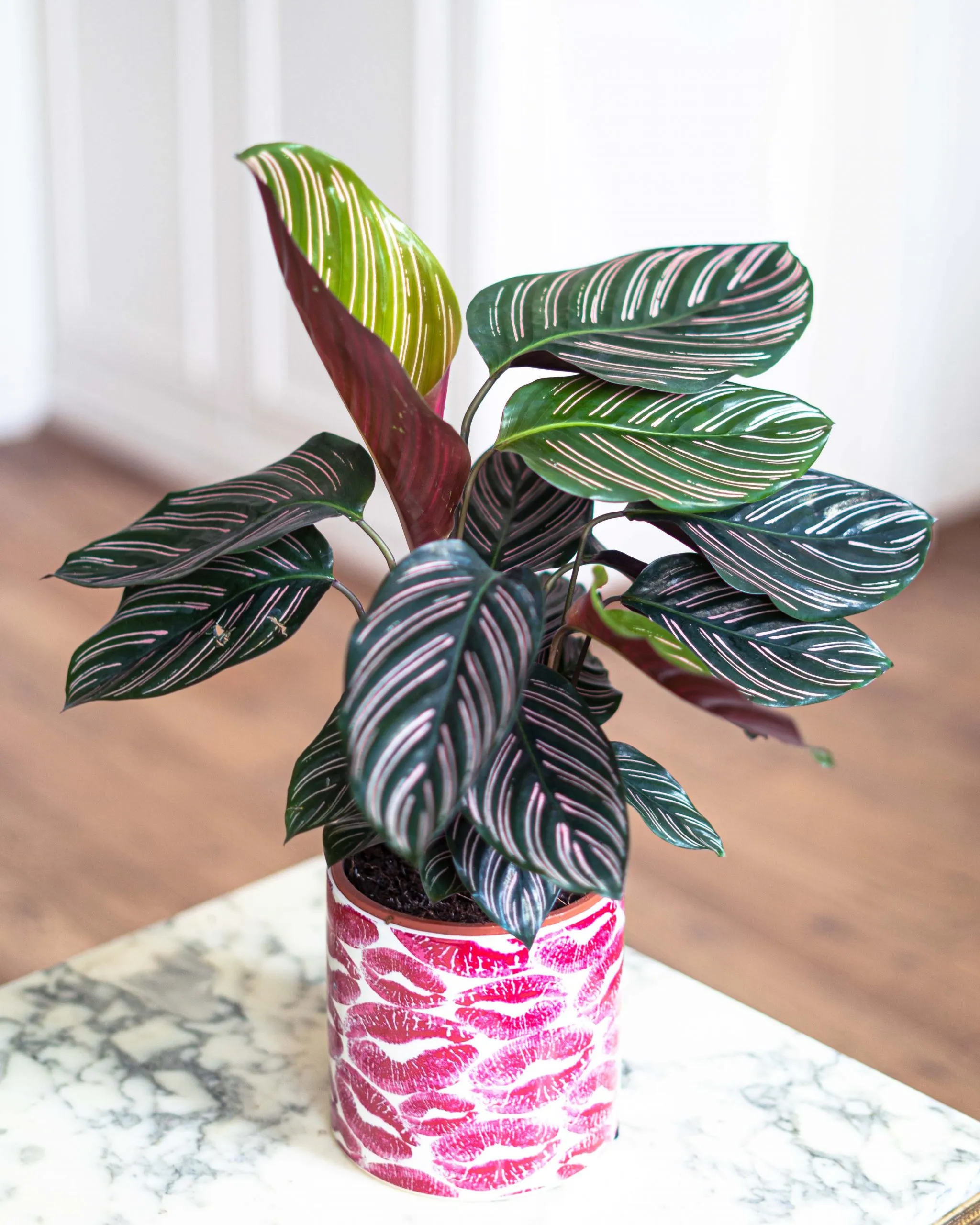
Common Calathea Care Concerns and Solutions
Despite your best efforts, occasional challenges may arise on your calathea care journey. Fear not, for we’ve compiled a list of common concerns along with practical solutions to keep your plants thriving!
Yellowing Leaves: Decoding Nature’s Signals
The sight of yellowing leaves can send any plant parent into a panic! Fear not, for yellowing leaves on calatheas may signal a range of issues:
- Overwatering Woes: Excessive moisture can lead to root rot, manifesting as yellow, mushy leaves. Allow the soil to dry out slightly between waterings and adjust your watering frequency accordingly.
- Light Stress: Direct sunlight or prolonged exposure to harsh light can scorch calathea leaves, causing yellow or brown patches. Move your plant to a spot with gentler, filtered light to prevent further damage.

Additional Care Tips for Optimal Growth
In addition to the fundamental care practices mentioned above, here are some extra tips to ensure your Calathea thrives:
- Water Quality: If you notice leaf burn or discoloration, particularly with a yellowish hue, it could be due to the quality of your tap water. Consider using distilled water, rainwater, or allowing tap water to stand overnight to allow chlorine and fluoride to dissipate.
- Cleaning Leaves: Keep your Calathea’s leaves clean by occasionally wiping them with a damp cloth. Avoid using leaf shine products, as they can clog the pores of the leaves and hinder respiration.

And there you have it, fellow plant aficionados-the definitive calathea plant care guide with finesse and flair! Armed with the knowledge gleaned from our botanical adventure, you’re well-equipped to embark on your own journey of calathea cultivation.
Remember, patience and attentiveness are the keys to unlocking the lush foliage and vibrant beauty of these enchanting plants. So, embrace the joys of nurturing your calatheas, and may your indoor jungle flourish with verdant splendor!
FAQs
How often should you water Calathea?
Water Calathea when the top inch of soil feels dry to the touch, typically every 1-2 weeks.
How do you care for Calathea indoors?
- Provide bright, indirect sunlight.
- Keep the soil consistently moist but not waterlogged.
- Maintain high humidity levels by misting the leaves regularly.
- Avoid cold drafts and sudden temperature fluctuations .
Does Calathea need sunlight?
Calathea prefers indirect sunlight and should be kept away from direct sunlight, as it can cause leaf burn or scorching.
How do I keep my Calathea happy?
- Provide the right amount of light, water, and humidity.
- Avoid exposing it to direct sunlight or cold drafts.
- Regularly dust the leaves to keep them clean.
- Monitor the plant for any signs of pests or diseases .
How do I know if my Calathea is happy?
- Vibrant, colorful leaves with no signs of discoloration or wilting.
- New growth emerging from the center of the plant.
- Healthy, firm stems and roots.
Why are calatheas difficult?
- Calatheas can be challenging to care for due to their specific requirements for light, water, and humidity.
- They are sensitive to overwatering, underwatering, low humidity, and cold temperatures, which can lead to issues such as leaf curling, browning, or dropping.
